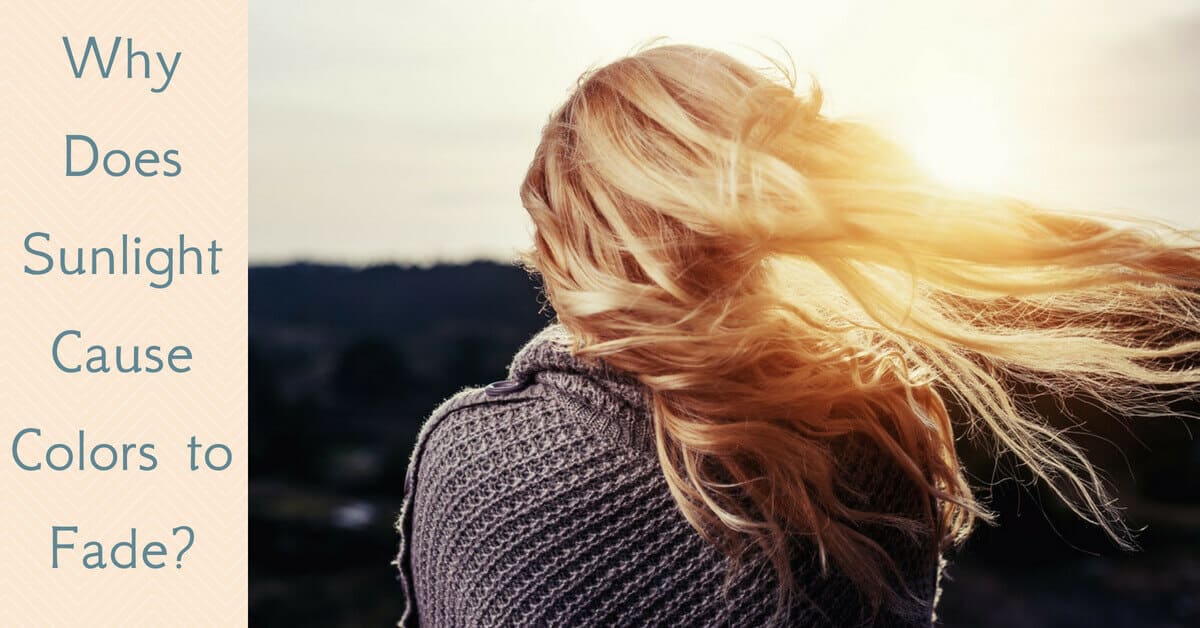- Finding the Right Indoor Plants for Desert Your Home - April 28, 2023
- Common Misunderstanding About Sun Exposure - April 18, 2023
- All about the Arizona Monsoon Season - May 21, 2021
Anyone who lives in Arizona knows the power of the sun. Exposure to sunlight really heats things up -and wears things out. Sunlight can make materials brittle, and cause them to crack, flake or warp. Exposure to sunlight can also cause colors to fade, bleaching the pigment out of bright and vivid paint, ink and dye.
But how does the sun cause colors to fade? Fading can be caused by many factors, including the chemical composition of the color pigment and climate but sun exposure is often the primary factor in how color fades over time. A big part of why the sun is so hard on pigment lies in the nature of sunlight and the spectrum of light it includes.
The Composition of Sunlight
Sunlight includes wavelengths of light that include every color our eyes can detect from the small light waves that make us perceive purple and violet to the wider light waves that our eye sees as bright red. But the spectrum of light doesn’t stop with what we can see. Like the frequency of a dog whistle, there are frequencies of light beyond our range of perception, wavelengths longer than red are “infrared” and wavelengths smaller than violet are known as “ultraviolet”. Together, sunlight has ultraviolet radiation, infrared radiation and visible spectrum radiation.
The spectrum of light is measured by the size of their wavelengths – from peak to peak- in a microscopic increment called nanometers. One nanometer is one billionth of a meter – or one millionth the size of a millimeter – an extremely small distance. A human hair is approximately 75,000 nanometers thick while a single molecule of water is about 0.25 nanometers at its widest. The longest infrared wavelengths are around 4045 nanometers and the smallest ultraviolet wavelengths are 100 nanometers. The spectrum of visible colors is in between, extending from 380 nm for visible violet to 780 nm for visible red.
Ultraviolet Radiation
Out of all the radiation the Sun sends to Earth, ultraviolet (or “UV”) rays are the most damaging. There are three main types of UV: UVA, UVB and UVC representing three different tiers of wavelength size.
Most UVC does not make it to the Earth’s surface, instead, it is absorbed by our planet’s atmosphere and ozone layer. It represents the smallest UV wavelengths, from 100-280nm.
Ultraviolet B, or UVB is the designation for medium wavelengths in the ultraviolet spectrum, measuring in the range of 280-315 nm. Some UVB is absorbed by the atmosphere, while a portion of it reaches us on the ground.
UVA designates the largest wavelengths of ultraviolet. The bulk of UV rays that reach the Earth are UVA, measuring from 315-380nm. Together the UVA and UVB that hit the Earth’s surface can cause significant issues for the integrity of pigment and material, as well as causing direct disruption to the DNA of our skin.
Fading Colors
Exposure to UV radiation can be extremely detrimental to colors and materials. Part of the issue of why colors fade is related to the molecular structure of the pigments responsible for the original hue. Ultraviolet light can have an aggressive impact on many types of pigments, especially natural dyes, quickly exciting and breaking down the molecules that bring color to an object. The more UV a colored surface absorbs, the more chances UV radiation has to affect the pigmentation.
Some pigments are more durable than others, while some pigment breaks down quite easily. This is why when a multi-color print, sign or textile experiences sun fading, some colors may seem to have evaporated while others appear hardly changed. UV rays can penetrate most standard home and vehicle windows, making it necessary to protect vulnerable furnishings from damage.
CC Sunscreens
The middle of summer in Arizona means the hottest, brightest and longest sun exposures of the year. Persistent sun can damage your home and its furnishings but protecting your belongings can help them last longer and stay beautiful. A great solution is getting passive solar protection with CC Sunscreens. CC Sunscreens specializes in beautiful sun blocking solutions for any home and style. CC Sunscreens bring climate control and UV protection to your home while decreasing your energy costs. If you’re after a home comfort and believe in quality that lasts, give us a call today to see what CC Sunscreens can do for you.

